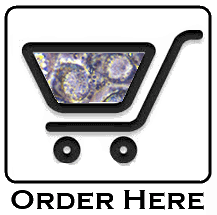Biobank Overview
These pages contain information on the strains held at the Biobank. To view all strains please navigate to the Products+ pages via the menu bar to the left, or the navigation menu at the top of each page. To order live isolates please see the Ordering page . Quantified DNA is also available upon request; please contact us for a quote. You may also order monoclonal antibodies through these pages, see here for more information.
Strain selection criteria
The full diversity of Chlamydia trachomatis has been revealed in recent years as a result of a number of whole genome sequencing projects (e.g. Harris et al., 2012). The intention is for the Chlamydia Biobank to represent this diversity, whilst avoiding duplication of strains in other collections. All strains included in the Biobank are selected by user defined parameters, primarily on their genetic divergence (according to whole genome sequencing data), importance in human pathogenesis and the presence of unique biological characteristics. Note that we do not hold strains that exist in other culture collections as part of the Biobank (e.g. ATCC, NCTC). Specific strain-inclusion criteria are as follows:
Whole genome phylogeny indicates that the Biobank now captures the majority of C. trachomatis diversity; although not all countries are represented. In fact phylogenetic analyses show that geographical distribution is not an important criterion in strain selection. This is because in most cases distribution of C. trachomatis is ubiquitous; due to modern travel capabilities geographical separation is no longer a barrier to sexual networks. Therefore, strain distribution does not depend on geographical location, and there are no country-specific strains – with the exception of isolated communities (e.g. Aborigine territories, remote island populations, etc.).
2) Biological interest: commonly isolated strains from recent clinical samples are held in the Biobank to represent strains circulating in the general population. Additionally, the Biobank includes strains which have unusual biological characteristics. These include natural plasmid-free variants (L2P- and SWFP-); strains with interesting inclusion morphologies (BRI008) and also unusual recombinants, e.g. exchanges of potential tropism-determining genes between urogenital and ocular strains. A small number of indels, SNPs or recombinations may be responsible for marked differences in phenotype, and as new biologically interesting strains are identified we hope to include these in the Biobank. We strongly encourage anyone in possession of such potentially interesting strains to contact us to discuss their inclusion in the Biobank.
3) Other isolates: The Biobank also holds strains of different genetic backgrounds carrying the GFP-bearing shuttle vector, including various knock-out variants. Additionally, the important human pathogen C. pneumonia and the mouse model species C. muridarum are also available.
Quality control
All strains included in the Biobank are of known provenance with accurate records kept since their isolation. As a final check, upon receipt the genotype is confirmed by sequencing of the ompA gene. Mycoplasma testing is performed on all isolates prior to their admission to the collection; certified cell lines were donated by the NCTC and were also tested for mycoplasma contamination upon arrival.
Whole genome sequencing
Raw whole genome sequence data is accessible for each strain through these pages, and assembled genomes and plasmids are also provided where available. We recommend the Artemis genome browser for analysis of sequence data, and the Artemis Comparison Tool (ACT) for comparison of sequence data. Comparison files can be made for use with ACT by following this link.
 |
 |
| Download Artemis | Download ACT |
Storage and data management
All live isolates are stored in 4SP buffer (see Harvesting Chlamydia protocol) in dedicated -80oC Biobank freezers, which are connected to a back-up power generator with call-out alarms in case of power failure.
Freezers are catalogued using the Freezerworks inventory management software; licence kindly provided by the University Hospital Southampton NHS Foundation Trust.









